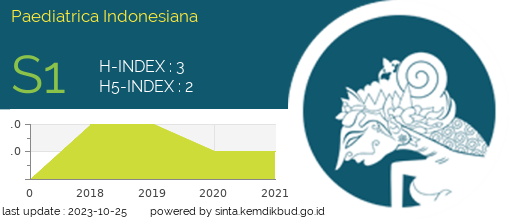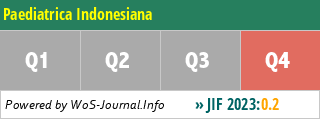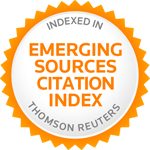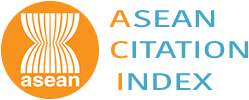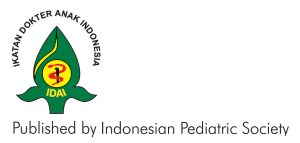Prevalence and risk factors of overweight and obesity in adolescents
DOI:
https://doi.org/10.14238/pi42.5.2002.206-11Keywords:
overweight, obesity, body mass index, BMI, risk factorsAbstract
Background Overweight and obesity in adolescents is associated with persistent obesity and higher risk of morbidity and mortality in adulthood.
Objective To determine the occurrence of overweight and obesity in adolescents and to identify the associated risk factors.
Methods A cross sectional study was carried out on 600 dlildren aged from 11 to 17 years old. Anthropometric measurements induded body weight, height, and triceps skin fdd thickness. The nutritional status was dassified based on BMI using the WHO standard criteria. Three 24-hour dietary recalls were collected to assess the quality of food. A systematic random sampling was made according to school grade and sex.
Results Five hundred and fifty two (92%) children met the indusion criteria, 46% were boys and 54% were girls. Most subjects (64%) had nonnal weight, 12% were underweight, 13% were overweight and 11% were obese. Among overweight group, 49% were boys, while among obese group, 53% were boys. On bivariate analysis, it was found that nutritional status had strong relationship with mother's education. On multivariate regression analysis, it was noted that energy expenditure and mother's education had significant negative correlation with the occurrence of overweight and obesity (8=- 0.235; p<0.001 and 8=-0.171; P=0.006) while energy intake and parental obesity had a significant positive correlation (8=0.498; P<0.001 and B=0.128; P<0.001).
Conclusions Energy expenditure and mother's education were inversely related to overweight and obesity, while energy intake and parental obesity were proportionally related to overweight and obesity.
References
2. Samsudin. Obesitas pada anak, penanggulangan dan pencegahannya. In: Hariyono S, Tacty ES, Sanmso Soeroso, editors, Kumpulan naskah lengkap symposium KONlKA LX-jilid I. Semarang: IDAI; 1993. p. 93-114.
3. Rosner B, Prineas R, Loggie J, Daniel SR. Percentiles for body mass index in US children 5 to 17 years of age. J Pediatc 1998;132:211-22.
4. Daniel SR, Khoury PR, Morrison JA The utility of body mass index as a measure of body fa mess in children and adolescents: differences by race and gender. Pediatrics 1997;99:804-7.
5. Moran R. Evaluation and treatment of childhood obesity. AAFP; 1999 Feb 15: e861.
6. Ge Keyou. Body mass index of young chinese adults. Asia Pacific J Clin Nutr 1997;6: 175-9.
7. Guo SS, Chumlea C. Tracking of body mass index in children in relation to overvweight in adulthood, Am J Cun Nun 1999;70 (Suppll):145-8.
8. Christoffel KK, Ariza A. The epidemiology of overweight in children: relevance for clinical care, Pediatrics 1998; 101:103-5.
9. Lake JK, Power C, Cole TJ. Child to adult body mass index in the 1958 British birth cohort: associations with parental obesity. Arch Dis Child 1997;77:376-80.
10. Xillin Yang, Hsu-Hage B HH, Huiguang T ian, Gang Hu, Qina Dong, Junhua Wu, et al. The role of income and education in food consumption and nutrient intake in a chinese population. Asia Pacific J Clin Nutr 1998; 7:217-23.
11. Dietz WH, Bellizi Me. Introduction: the use of body mass index to asses obesitv in children. AmJ Clin Nutr 1999; 70 (Suppl 1): 123.
12. WHO. Physical status; the use and incerpretation of antropometry. WHO technical report. Geneva: WHO; 1995. p. 263.
13. Lehingue Y. The European Childhood Obesity Group (ECOG) project: the European collaborative study on the prevalence of obesity in children. Am J Clin Nutr 1999;70(Suppll):166.
14. Tanuwijaya S. Remaja suatu periode yang potensial. In: Naskah lengkap KONIKA X; 1996; Bukittinggi, Indonesia. p. 203-211.
15. SuandiI KG. Masalah gizi remaja. Naskah lengkap seminar remaja dan permasalahannya. Peringatan tiga belas tahun klinik cumbuh kembang anak - lab/SMF Ilmu Kesehatan Anak FK UNUD/RSUP Denpasar; 1997; Denpasar, Indonesia. p. 14-30.
16. Story M. Nutritional requirements during adolescent. In: Mc Anarney, et al, editors. Textbook of adolescent medicine. Philadelphia: WB Saundes; 1992. p. 51-62.
17. Dixon LB, McKenzie I, Shannon B, Mittchel DC, Smiciklas-Wright H,Tershakovec AM. The effect of changes in dietary fat on the food group and nutrient intake of 4-10 year old childre n. Pediatrics 1997;100:863-72.
18. Ditektorat Bina Gizi Masyarakat. Gizi olah raga untuk prestasi. Jakarta: DepKes RI, 1997.
19. Dietz WH. Use of the body mass index (BMI) as a measure of overweight in children and adolescent. J Pediatr 1998;132:191-2.
20. Samsudin. Masalah gizi ganda pada anak: suatu tantangan baru. In: Samsudin, Nasar SS, Sjarif DR, editors, Naskah lengkap PKB IKA XXXV. Masalah gizi ganda dan tumbuh kembang anak. Jakarta: IDAI; 1995. p. 1-11.
21. Martorell R, Ketel Kahn I., Hugbes MI, Grummer-Strawn SL. Obesitv in Latin American women and children. J Nutr 1998;128:1464-73.
22. Tait SL Obesity. In: OS McLAren, O Burhan, NR Belton, editors. Textbook of pediaric nutrition. 3rd ed. Tokyo: Churchill Livingsrone; 1991. p. 485-509.
23. Forbes GEl" Nutridon and gnw,l1::h, In: ER McAnarney, RE Kreipe, DP Orr, editors. Textbook of adolescent medicine. P hiladelphia: WB Saunders; 1992. p. 68-74
24. Soetjiningsih. Obesitas pada anak. In: IGN Ranuh, editor. Tumbuh kembang anak. Jakarta: EGC; 1995. p. 183-90.
25. Kreipe RE. Normal somatic adolescent growth and development. In: Mc Arurney, editor. Textbook for adolescent medicine. Philadelphia: WB Saunders; 1992. p. 51-62.
26. Baughcum AE, Chamberlein LA, Deeks CA, Powers SW, Whitaker RE. Maternal perceptions of overweight preschool children. Pediatrics 2000; 106: 1380-5.
27. Whitaker RC, Deeks CA, Baughcum AE, Specker BL. The relationship of childhood adiposity to parent body mass index and eating behaviour. Obes Res 2000; 8:234-40.
28. Whitaker RC, Wright JA, Pepe MS, Seidel KD, Dietz WH. Predicting obesity in young adulthood from childhood and parental obesity. N EnglJ Med 1997;3.37:869-73.
Downloads
Published
How to Cite
Issue
Section
License
Authors who publish with this journal agree to the following terms:
Authors retain copyright and grant the journal right of first publication with the work simultaneously licensed under a Creative Commons Attribution License that allows others to share the work with an acknowledgement of the work's authorship and initial publication in this journal.
Authors are able to enter into separate, additional contractual arrangements for the non-exclusive distribution of the journal's published version of the work (e.g., post it to an institutional repository or publish it in a book), with an acknowledgement of its initial publication in this journal.
Accepted 2016-11-10
Published 2006-10-30


